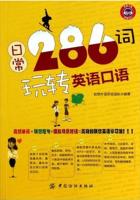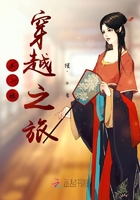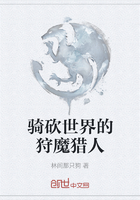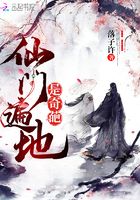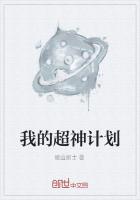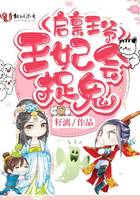By Catherine D。Hughes
Winter arrives in Antarctica in March。The continent is in the Southern Heimsphere and has seasons that are opposite to those in the north。Nearly all creatures leave except for the emperor,the only animal that spends the winter on Antarctica's open ice。Emperor penguins are the largest of the 17 species,or kinds,of penguins,and they spend their entire lives on Antarctic ice and in its waters。
They survive-breeding,raising young,and eating-by relying on a number of clever adaptations。Emperor clump together in huge,huddled masses。They take turns moving to the inside of the group,where they're protected from the icy cold temperatures and wind。
Once they've had a chance to warm up,they take their turns back on the circle's edges,giving fellow penguins time in the warmer center。
These flightless birds breed in the winter(unlike most birds,which breed in the springtime)。After a courtship of several weeks,a female emperor penguin lays one single egg,then leaves。Female emperors take off toward the open sea to feed,traveling up to 50 miles(80kilometers)across the frozen surface。Where does that leave the eggs?At the feet,literally,of the male emperors。
Each penguin egg's father balances it on his feet and covers it with his brood pounch,a very warm layer of feathered skin designed to keep the egg cozy。There the males stand,for about 65 days,through icy tempertures,cruel winds,and blinding storms。And they eat nothing that whole time。
Finally,after about two months,the females return from the sea,bringing food they regurgitate,or bring up,to feed the now hatched chicks。The males eagerly leave for their own fishing session at sea,and the mothers take over care of the chicks for a while。
The youngsters stay sheltered in their mother's brood pouch for two months。If a young chick falls out of that warm spot,it can freeze to death in as little as two minutes。As the young penguins grow,adults leave them in groups of chicks called cres while they leave to fish。They return with food which regurgitate for their young。
There is season for the timing of emperor penguins'hatching。By December,when the Antarctic weather has warmed somewhat,the ice the penguins occupy begins to break up,bringing open waters closer to the nesting sites。
Now the chicks are at the age of independence-old enough to take to the seas and fish for their own food。
三月的南极洲已经是天寒地冻了。南极洲位于南半球,季节与北半球截然不同。冬天里,几乎所有的生物都会离开这里。只有皇帝企鹅不走,所有动物之中,只有它们在南极洲一眼望不到边的冰上度过严寒的冬天。企鹅家族里有17个物种,或者说种类,帝企鹅是最大的一种。它们在南极洲的冰上、在南极洲的水里生活,一直到生命的终结。
南极洲环境恶劣,聪明的帝企鹅能依靠很多巧妙的方法适应环境,生存下去,包括繁殖、育雏和进食。众多企鹅紧紧地挤在一起,形成一个巨大而且坚实的群体,还轮流移动到企鹅群的内部。在那里,他们可以不受凛冽的寒风的袭击,可以抵御冰冷的气候。只要他们能在企鹅群的内圈取得温暖,浑身热起来,就再次移动到外围,让其他企鹅到里面来,好让同伴也能享受到内圈的温暖。
企鹅是不能飞的鸟,每年冬季的时候繁殖(这一点和大多数鸟类不同,大多数鸟类都是春天开始繁殖)。经过数周的求爱、配对,雌性帝企鹅会产下一个蛋,只有一个蛋,然后就离开了!雌企鹅离开自己的宝宝,踏上征程,前往一望无际的海洋,去那里觅食。她们需要在封冻的冰层上行走远达50里的路程。那产下的蛋留在哪里呢?准确地说,蛋留在了雄性帝企鹅的脚上。
每一位企鹅爸爸都把蛋平稳地安放在自己的脚上,用向内凹的脚掌盖住。这是专门用来孵蛋的工具——一层长满了羽毛的外皮,非常暖和,蛋在上面可以保持温暖舒适。帝企鹅就是那样站着,勇敢地面对冰冷的天气,迎着刺骨的寒风,任由密集、剧烈的暴风雨肆意袭击,一直站在那里,度过大约65个日日夜夜。在整个过程中,他们不吃不喝。
最终,大约两个月以后,雌企鹅带着食物,从海洋里返回聚居地,食物是被她们存放在胃里的。她们回到这里,来哺育、喂养自己的宝宝。现在宝宝已经破壳而出,变成了小企鹅。雄企鹅把孩子交给雌企鹅,就迫不及待地向着海洋的方向行进,他们要去海洋里找食物吃。这样,母企鹅接替雄企鹅照管孩子。
大约有两个月的时间,小企鹅都是呆在妈妈的脚掌上的。如果小企鹅从那片温暖的地方跌落下去,两分钟之内就会被冻死。小企鹅越长越大,会成群结队地聚集在一起,成年企鹅就离开他们去海里捕鱼吃。它们回来的时候,把储存在胃里的食物带给孩子吃。
帝企鹅孵蛋有季节性,有确定的时间。12月份之前,南极洲的气候有点变暖了,企鹅聚居的冰块开始融化,使得无冰水面离筑巢区更近了一些。
现在小企鹅到了独立的年龄——可以自己走向海洋,自己觅食。
你知道吗
世界上总共有17种企鹅,但是只有少数几种生活在南极大陆上,其中包括帝企鹅。帝企鹅聚居在南极的大约40个地方,每个聚居地的企鹅都很多,总计大约有40万只。帝企鹅是所有企鹅种类里最大的一种,全身是黑白相间的颜色,平均身长45寸(115厘米),大约高100公分,体重在30公斤左右。帝企鹅不会飞,但是善于游泳,能够潜入深达460米的海里摒住呼吸长达二十分钟。在海洋里,帝企鹅捕食鱿鱼和其他鱼类。
词汇寻解
New Words
clump n。vi。形成一丛;以沉重的步子行走vt。使成一丛;使凝结成块
huddle vt。把……挤在一起;使缩成一团vi。挤作一团;蜷缩
cozy adj。舒适的,惬意的
regurgitate vi。回流;反刍vt。使回流;使反刍


